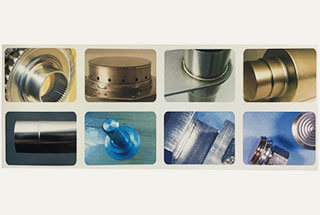What is Laser Welding?

Laser welding is a process that employs high-intensity laser beams to melt and merge materials together. The laser beam is focused on the desired welding spot, creating a localized heat source that melts the material. The heat is then produced by the interaction of the laser beam with the material, resulting in a seamless bond. The process is non-contact and non-mechanical, which means that it does not require any pressure or filler.
Benefits of Laser Welding
Laser welding offers a host of benefits that have made it a popular choice among various industries. Some of these benefits include:
1. Precision: The laser beam is focused on the welding spot, resulting in precise control over the heat input, which leads to consistent and accurate welding.
2. Speed: Laser welding is fast and can be completed in seconds, resulting in increased productivity and reduced downtime.
3. Efficiency: Laser welding is highly efficient as it requires minimal material and energy, resulting in cost savings.
4. Quality: Laser welding produces high-quality welds that are free from defects and require minimal post-weld cleaning.
5. Versatility: Laser welding can be used to weld a wide range of materials, including metals, plastics, and even ceramics.
Laser Welding vs. Traditional Welding Methods
Laser welding differs from traditional welding methods in several ways. Traditional welding methods such as arc welding and gas welding require mechanical pressure and filler material. In contrast, laser welding is a non-contact and non-mechanical process that does not require any filler material. Additionally, laser welding produces less heat, resulting in a smaller heat-affected zone and reduced distortion. Due to these factors, laser welding is ideal for welding thin materials and complex geometries that other welding methods may not be able to handle.
Handheld Laser Welder Technology
Handheld laser welders are a revolutionary technology that has made laser welding even more accessible and versatile. As the name suggests, handheld laser welders are small and portable devices that can be used for on-site repairs and welding. They are ideal for welding small components, repairing jewelry, or even welding pipes without needing to remove them.
The cost of a handheld laser welder can vary depending on the brand, features, and specifications. However, the benefits of using a handheld laser welder often outweigh the cost. Handheld laser welders are efficient, versatile, and produce high-quality welds. They offer the user the flexibility to weld in tight spaces and handle small welding jobs that may be impossible to do with traditional welding methods. Moreover, they are easy to set up and require minimal maintenance, making them a cost-effective option in the long run.
Applications of Laser Welding
Laser welding has found widespread use across various industries, including aerospace, automotive, jewelry, medical, and electronics. The high precision and quality of the welds produced by laser welding make it ideal for sensitive applications such as medical implants or electronic components. It is also used in the automotive and aerospace industries to weld lightweight materials such as aluminum and titanium.
Conclusion
In conclusion, laser welding is a versatile and efficient welding technology that offers several benefits over traditional welding methods. The handheld laser welder technology has made laser welding even more accessible and versatile, allowing for on-site repairs and welding of small components. Although the cost of a handheld laser welder may vary, the benefits of using one often outweigh the cost. Laser welding has found widespread use across various industries, and its applications are only set to increase in the future as new materials and technologies emerge.